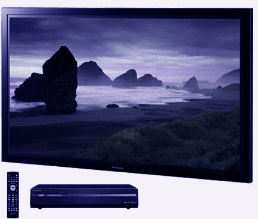Network DVR: The First Challenge of a Connected Future - The Shelly Palmer Report

Originally published on November 5, 2008
One important vision of the future of video distribution is the concept of making content available to consumers, WIWWIWWIW, "What I want, where I want, when I want." To accomplish this distribution goal, service providers will have to store content in a central location and transcode (prepare) it for distribution to a plurality of devices. Just think of the various screen sizes in your world. Cell phone 2 ½" diagonal, PDA 3 ½" diagonal, Video Monitor in the back of the SUV 9" diagonal, laptop 15" diagonal, living room HDTV 42" diagonal, etc. Just making video available in the appropriate resolutions, aspect ratios and sizes for these different devices seems like a big job. It is.
Forgetting all of the business rules and technological hurdles of cooperation and interoperability, one very big first step in this process is the centralized storage of the content. Cablevision came up with a plan. Eliminate the need for local storage in individual set-top boxes and let subscribers have DVR functionality by creating one big network DVR.
You'd get 160GB of remote storage (enough for most people to record their favorite programs) and complete DVR functionality for just $9.95 per month. Nothing to connect, nothing else to buy … just pick up your remote control and use the service. In fact, it sounds a lot like video on-demand (VOD). It even sounds a little like Pay-Per-View (PPV) hummm … What would the differences be? Well, for DVR functionality, you would choose what you want to record in advance. For VOD functionality, there would be a menu of pre-recorded content to choose from and for PPV, there would be a menu of pre-recorded content for you to pay for and then watch.
All those services DVR, VOD & PPV sound very similar and even a little confusing, but the idea of not having to hook up a new set-top box sounds great, right?
Not everyone thinks so. When Cablevision first revealed their intentions, the Copyright Alliance, a forty plus member organization, which includes the NFL, NCAA, MLB, MGM, NBC, CBS, News Corp and many, many more, sued Cablevision, claiming the RS-DVR (Remote Storage Digital Video Recorder) "fundamentally destabilizes copyright law." The court ruled in favor of the Copyright Alliance, however, an appeal filed by Cablevision reversed the decision unanimously. Then, last week (November 5th) the Copyright Alliance, with the exception of the National Association of Broadcasters (NAB) and AT&T, filed an amicus curiae (friends of the court) brief with the Supreme Court. The brief seeks to reverse the decision made by the appellate court, who ruled that there was little functional difference between a remote storage DVR and a set-top DVR.
The Copyright Alliance really isn't up in arms about the technology, they're mad because Cablevision refuses to pay additional rebroadcast royalties, in addition to the ones they already pay for operating DVR service. The Copyright Alliance wants Cablevision to "pay for the privilege of copying and transmitting copies of their work." The only problem is that Cablevision isn't recording the works, users are, and they are covered by the Sony Corp v. Universal City Studios ruling from 1984. In fact, nothing related to the functionality of the RS-DVR changes from a regular DVR.
In their amicus curiae, the Copyright Alliance asked the court to answer the following question:
1) Whether the appellate court ruling fundamentally destabilizes copyright law and inverts proper relationship between direct and secondary copyright infringement?
2) Whether the Second Circuit court erred in ruling that Cablevision is not directly liable for copying Petitioners' (Copyright Alliance) programs?
3) Whether the appeals court erred by holding that Cablevision's performance of Petitioners' programs are not "public," and therefore not infringing? (Regarding each performance being recorded separately and subsequently sent to the person who requested it.)
It is important to note that copyright matters are generally better settled in Congress, which the Supreme Court said in 2003, and which the Copyright Alliance includes in their brief ("It is generally for Congress, not the courts, to decide how to best pursue the Copyright Clause's objectives.") After all, there is always a chance that, especially given their previous statement, that the Supreme Court won't even take the case.
If I were asked to testify in this case, I would bring some props and do the following demonstration: First I would open up a DRV and show the court the cable that connects the motherboard's hard drive controller to the hard drive. This cable would be about six inches long. Then I would remove the hard drive and put it on the table next to the DVR and connect it with a three foot cable and ask the court to find an engineer anywhere in the world that would tell me how the functionality of the device had changed. Then I bring in a two thousand foot cable on a spool with both ends available and plug in the drive and ask the same question. Case closed.
To a computer, a file is a file is a file. A digital video file is a bunch of ones and zeros arranged in format that can be interpreted by the computer and displayed as a video signal.
The technical part of my demonstration would be even simpler to understand. I would attach the drive to a computer with a graphical user interface like Windows or OS X and show the court the picture of the directory where the files were stored. Then I would show all of the other directories that the computer user had "permission" to access. The word permission is a term-of-art in the computer industry. It restricts users to specific directories by granting or denying "permission." Then I would ask the court to find any engineer anywhere in the world who could tell me how the functionality of the device changes regardless where the files are stored if I only have permission to access the files the system administrator has granted me? Case double closed.
This case is not about technology; it is about greed and, quite probably, ignorance.
Time Warner ("Start Over" and "Look Back") and Cox (ABC primetime content on-demand) nPVR (network personal video recorder) services have not been challenged by the Copyright Alliance. Of course, these services do not allow subscribers to fast-forward through commercials, so there is more to this story than technology.
In the post-Google, post-iPod world, viewers are starting to expect to have their media WIWWIWWIW. Instead of filing lawsuits, we should really put our heads together and develop a well-rounded, profitable industry standard for ad-supported WIWWIWWIW distribution. There's not much time left. If the content rightsholders spend too much time preventing legitimate service providers from creating an interoperable, WIWWIWWIW future, consumers will take matters into their own hands (see the epitaph on the Music Industry's tombstone) and that would truly be a shame.
Shelly Palmer is a consultant and the host of MediaBytes a daily show featuring news you can use about technology, media & entertainment. He is Managing Director of Advanced Media Ventures Group LLC and the author of Television Disrupted: The Transition from Network to Networked TV (2008, York House Press). Shelly is also President of the National Academy of Television Arts & Sciences, NY (the organization that bestows the coveted Emmy® Awards). You can join the MediaBytes mailing list here. Shelly can be reached at shelly@palmer.net
Check out the Shelly Palmer Report archive.


